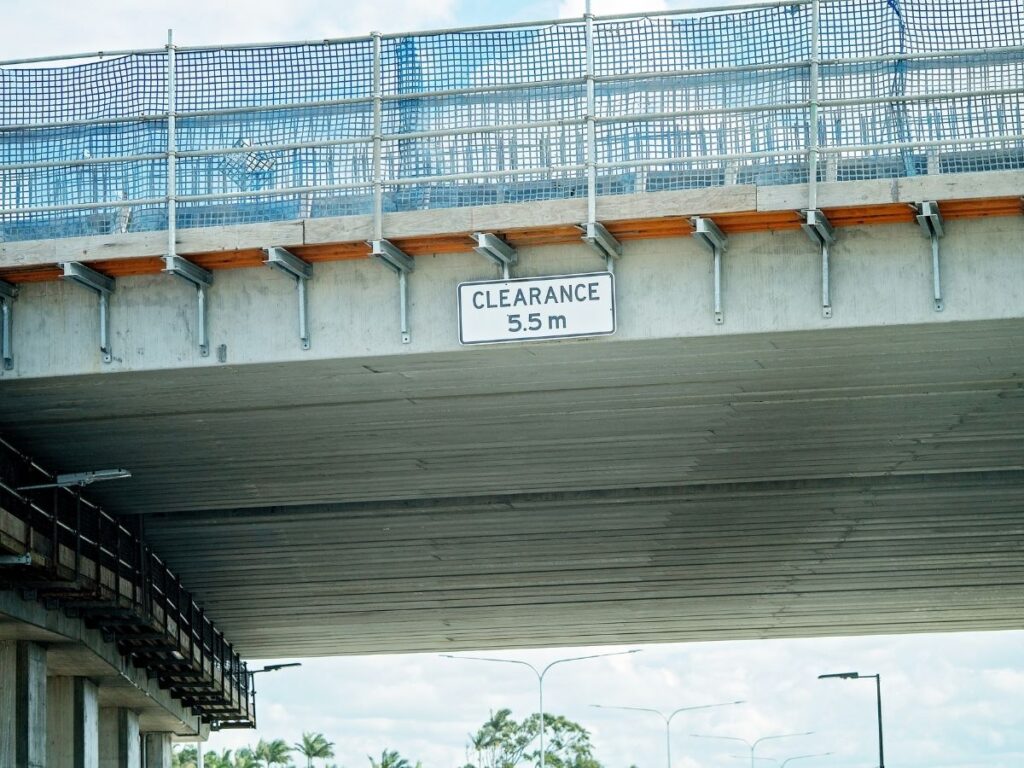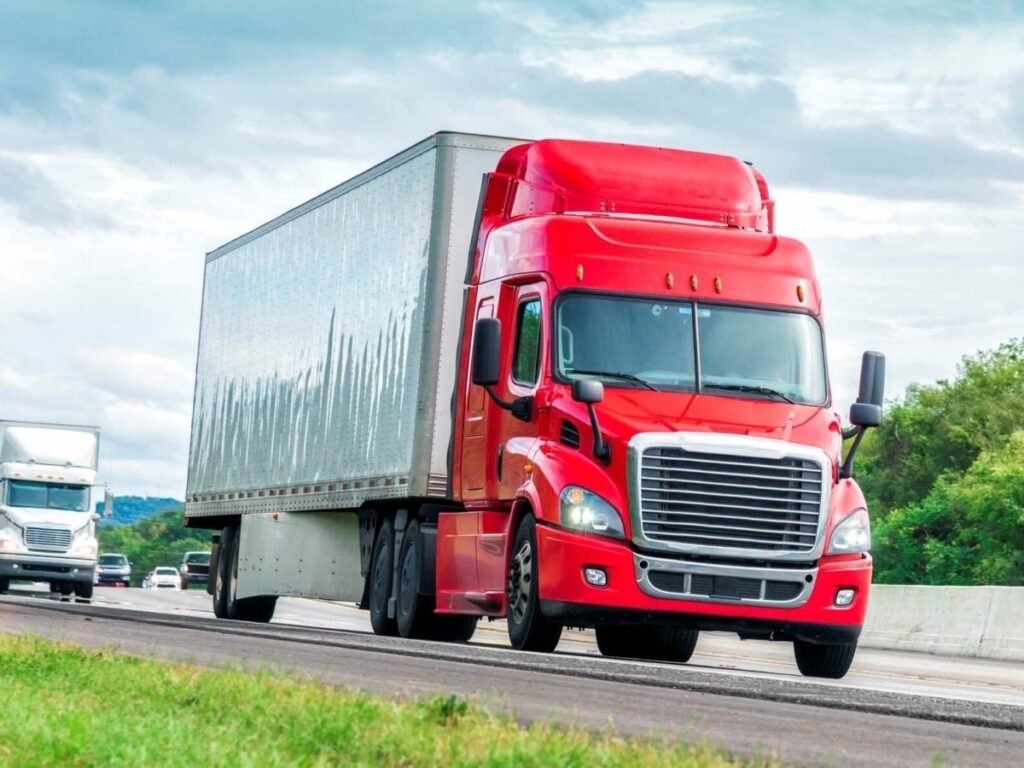One of our clients once bought a new loading dock setup, only to find out their trucks didn’t even fit under the overhang. No one had asked how tall the rigs were.
That lesson wasn’t cheap, and it’s more common than you’d think.
Over the years, I’ve helped companies choose the right trailers, plan site layouts, and review specs for custom hauls. And truck height is always one of the first things I check.
This article gives you a practical guide to semi truck height, including how it’s measured, what varies it, and how to plan around it in your operations. You’ll walk away with answers you can act on.
Keep reading!
1. How to Measure Your Semi Truck’s Height
If you’re managing trucks, dispatching routes, or working on facility layout, measuring vehicle height isn’t just a good habit, it’s a necessity. Because even a couple of inches off can create big problems once your truck hits the road. Here’s how to get it right every time:
- Start With Level Ground: Always begin on a flat, stable surface. If your truck is tilted, even slightly, it will throw off the measurement. A truck on a sloped parking lot can easily give you a false height reading by 2–3 inches.
- Measure the Entire Rig, Not Just the Cab: A lot of folks forget that the total height includes the trailer, which is often the tallest point. The cab might sit at 10 feet, but that dry van or reefer trailer could hit 13’6” or more. Always measure from the ground up to the highest fixed point of the full combination.
- Use the Right Tools:
- Measuring Pole: A truck measuring pole can be adjusted and extended while keeping it upright. It’s reliable and designed for height checks.
- Laser Distance Measurer: These devices offer quick and accurate measurements, especially indoors or under controlled lighting. They’re more precise than manual tools but may struggle in bright daylight or outdoor use.
- Long Tape Measure: Old school but effective, especially when paired with a second person to hold the end steady on the ground.
If you’re in a pinch, even a telescoping painter’s pole with a marked scale can do the trick—just make sure it’s straight and vertical.
- Measure With and Without Load: Suspensions compress under weight. That means a fully loaded trailer might ride lower than an empty one. Measure both loaded and unloaded conditions if your truck is used for variable cargo types.
- Include Add-Ons and Roof Fixtures: It’s easy to overlook items that add inches to your height profile:
- Satellite domes
- AC units or HVAC equipment
- Roof-mounted fairings or spoilers
- Light bars or antennas
- Spare tire racks
If it’s a permanent part of the rig, it should be included in your height measurement. One of my clients forgot to factor in a roof-mounted refrigeration unit. It added just four inches—but those four inches turned their delivery route into a legal mess.
2. Standard Height of a Semi Truck
When people ask how tall a semi truck is, they’re usually expecting one standard number. But in reality, the height can vary quite a bit depending on the configuration, trailer type, and added equipment.
Here’s a breakdown of common semi truck and trailer heights you’ll come across in business operations:
| Configuration | Typical Height (Feet) | Details |
| Day Cab (No Sleeper) – No Trailer | 9’–10′ | Lower overall profile, often used for regional or city deliveries. |
| Sleeper Cab – No Trailer | 10’–11′ | Slightly taller due to roof fairings and integrated sleepers. |
| Flatbed Trailer – Empty | 8’–9′ | Varies based on deck height and tire configuration. |
| Flatbed Trailer – Loaded | Up to 13′ 6″ | Must account for cargo height; load limits apply. |
| Dry Van Trailer (53 ft) | 13′ 6″ | Industry standard for general freight across most U.S. states. |
| Reefer Trailer (Insulated) | 13′ 6″–13′ 8″ | Slightly taller than dry vans due to insulation and refrigeration units. |
| Double-Deck Trailer | 13′ 6″–14′ | Used in high-volume, low-weight cargo setups; may require permits depending on height. |
| Container on Chassis (High Cube 9’6”) | 13′ 6″–13′ 10″ | Depends on chassis height and tire size; high cubes often used in intermodal transport. |
Always keep in mind: if your trailer height is close to the legal limit (usually 13′ 6″), it’s worth double-checking clearance on every route. A couple of inches can make or break your delivery plan.
3. Legal Height Limits by Region
Legal height limits can vary from one place to the next, and getting them wrong can mean fines, detours, or even serious accidents. Below, I’ve broken it down by key regions where height limits directly impact business freight movement.
United States
In most U.S. states, the legal height limit for semi trucks is 13 feet 6 inches. This has become the de facto national standard, especially on federal highways and interstates. However, a few western states like California, Arizona, and Colorado allow trucks up to 14 feet tall without special permits. Still, individual routes may have lower clearances, especially on older roads or bridges.
Europe
European countries generally enforce a lower maximum vehicle height of 4 meters (around 13′ 1″). This limit is fairly consistent across EU member states, especially for cross-border freight under standard regulations. Exceeding this height typically requires pre-approval and specific routing, often avoiding older city roads. Be especially cautious with international shipments, as older infrastructure in cities can be unpredictable.
Australia
Australia’s standard legal vehicle height is 4.3 meters (approximately 14′ 1″). This applies to most freight vehicles, including semi trailers and B-doubles operating across the national highway network. In regional areas, road trains may receive exemptions for taller setups, but those require permits and route restrictions. Urban areas still pose risks due to bridges and overpasses that haven’t been upgraded.
Asia
Height limits in Asia vary widely by country, infrastructure development, and whether you’re operating domestically or on cross-border routes. In China, the standard vehicle height limit is 4 meters (13′ 1″), though certain expressways accommodate slightly taller vehicles with permits.
India typically enforces a 4-meter limit as well, but local road conditions and inconsistent signage can make compliance tricky. Southeast Asian countries like Thailand, Vietnam, and Malaysia also use the 4-meter limit, but rural areas may have lower actual clearance due to aging roads or low-hanging cables.

4. Bridge Clearances and Road Restrictions
Just because your rig is within legal height doesn’t mean every road will cooperate. Bridge clearances are one of the biggest risks for semi trucks on older or secondary routes. Many bridges, especially in older cities or rural counties, were built long before today’s trailer sizes became common. And let’s be honest—not all of them are well marked.
What You Need to Know About Bridge Clearances
- Interstate highways are generally built to accommodate 14′ or more, so most standard trucks pass without issue.
- Secondary roads, industrial zones, and older city streets often have bridges under 13′ 6″—sometimes much lower.
- Railroad overpasses are particularly tricky because they tend to be narrow and dated.
Always look up the actual posted clearance, not just the map route. And keep in mind—sometimes road repaving raises the road surface, reducing real-world clearance even if the signage hasn’t changed.
Road Restrictions Add Another Layer
Height is one factor, but restrictions often include weight, length, and axle limits, especially on municipal or rural roads.
Many cities impose zoning-based truck restrictions, preventing high-clearance vehicles from entering certain zones during business hours. This especially applies to deliveries near schools, hospitals, or downtown corridors.
Using a truck-specific GPS is your best bet. Standard navigation apps won’t show low clearances or restricted truck routes. Some logistics teams also run manual clearance checks for new delivery zones—worth doing if your routes vary week to week.

5. Height Considerations in Urban vs Rural Deliveries
Height matters in different ways depending on where you’re delivering. Urban and rural environments come with their own sets of challenges—and they affect everything from trailer choice to timing.
Urban Delivery Zones
- Low bridges and tight clearances are a constant issue. Older city infrastructure was never designed for modern 13′ 6″ trailers.
- You’ll also deal with compact loading docks and restricted access lanes, which often require shorter, lower-profile rigs.
- Add in poor signage or faded clearance labels, and your drivers could end up in a tight spot—literally.
In cities, smaller box trucks or day cabs with low-profile trailers often make more sense. Even if they require more trips, the tradeoff in reduced risk and easier maneuverability is usually worth it.
Rural Delivery Routes
- You might think there’s more room in rural areas—but low utility lines, older wooden bridges, and unpaved roads change the game.
- Tree limbs, snow build-up, and shoulder drop-offs can all alter your effective clearance.
Some of the worst height-related damage I’ve seen didn’t come from cities—it came from gravel access roads and small farming towns. Height planning isn’t just about the tallest structure—it’s also about the unexpected.
Tailoring Your Strategy
If your business delivers in both settings, consider assigning different vehicle types by zone. Urban routes might call for compact rigs and earlier deliveries (before streets get crowded), while rural drops may benefit from pre-inspections or driver notes for each stop. Build the flexibility into your dispatch process, and you’ll avoid the majority of height-related issues before your truck even starts the engine.
6. Industry Use Cases: Why Height Matters
I’ve worked with businesses across freight, retail, construction, and even event logistics, and one thing they all have in common is that trailer height matters more than most people realize. It affects more than just whether your truck fits under a bridge. It influences how you load, where you park, how fast you move goods, and what kind of permits you need.
- Retail and Grocery Chains: Deliveries to older storefronts or city-based grocery stores often involve low loading bays and limited vertical clearance. A trailer that’s even six inches too tall may not fit, forcing delays or manual unloading.
- Construction and Heavy Equipment Transport: Moving cranes, excavators, or prefab materials often pushes trailers beyond standard height. Oversized permits and pre-approved routes become necessary, which adds cost and complexity.
- Food and Beverage Distribution: Reefer units and insulated trailers tend to be taller due to refrigeration systems. This extra height can complicate access to loading docks, especially in tight urban zones.
- Event and Exhibition Logistics: Temporary venues, like pop-up installations or mobile stages, may not accommodate full-height trailers. Crews often have to use custom-built, lower-profile trailers just to make deliveries work.
- E-commerce Warehousing and Last-Mile Delivery: Facilities designed for rapid turnover often require precise dock height compatibility. If your trailer doesn’t line up properly, it slows down automation and manual handling alike.
- Intermodal and Port Operations: High cube containers on chassis can exceed 13′ 6″ depending on tire specs and suspension. One missed measurement here can lead to terminal hold-ups or reloading fees.
7. Factors That Affect Semi Truck Height
Height isn’t a fixed number, and several details, both mechanical and operational, play into it. Knowing what affects your truck’s height helps you stay compliant and avoid roadblocks, literally.
Suspension and Load Weight
Your suspension setup has a big impact on overall height. Air ride suspensions, for example, tend to raise or lower based on weight, automatically adjusting to the load. Spring suspensions stay more consistent but offer less flexibility in uneven terrain. And the more weight you put on a trailer, the more it compresses the suspension—changing your clearance in real time.
Tire Size and Configuration
Tire specs are often overlooked, but they can quietly change the height of the entire rig. A change in sidewall height or tire pressure can add or subtract a couple of inches. Wide-base tires may also lift the trailer higher than dual tires. Anytime tires are replaced, especially with a different model, it’s smart to re-check your height.
Trailer Design and Add-Ons
Trailer type plays a big role—reefer trailers are often taller than dry vans due to built-in cooling systems and extra insulation. Flatbeds, on the other hand, start lower but can exceed legal limits once cargo is stacked high. Add-ons like roof fairings, AC units, satellite domes, and toolboxes can sneak your rig over height limits if you’re not careful. Always measure after custom installs or retrofits, not just before.

Conclusion
We opened this article with a real problem: a rig too tall, a bridge too low. But now, you’ve got tools to avoid that mess.
From standard measurements to regional laws to what changes your trailer’s height, we’ve covered it all.
You’re not guessing anymore.
Start measuring. Start updating your records. And start running safer routes.
Rhinotrail builds semi-trailers that meet your specs, legal limits, and load needs. Contact us today.


